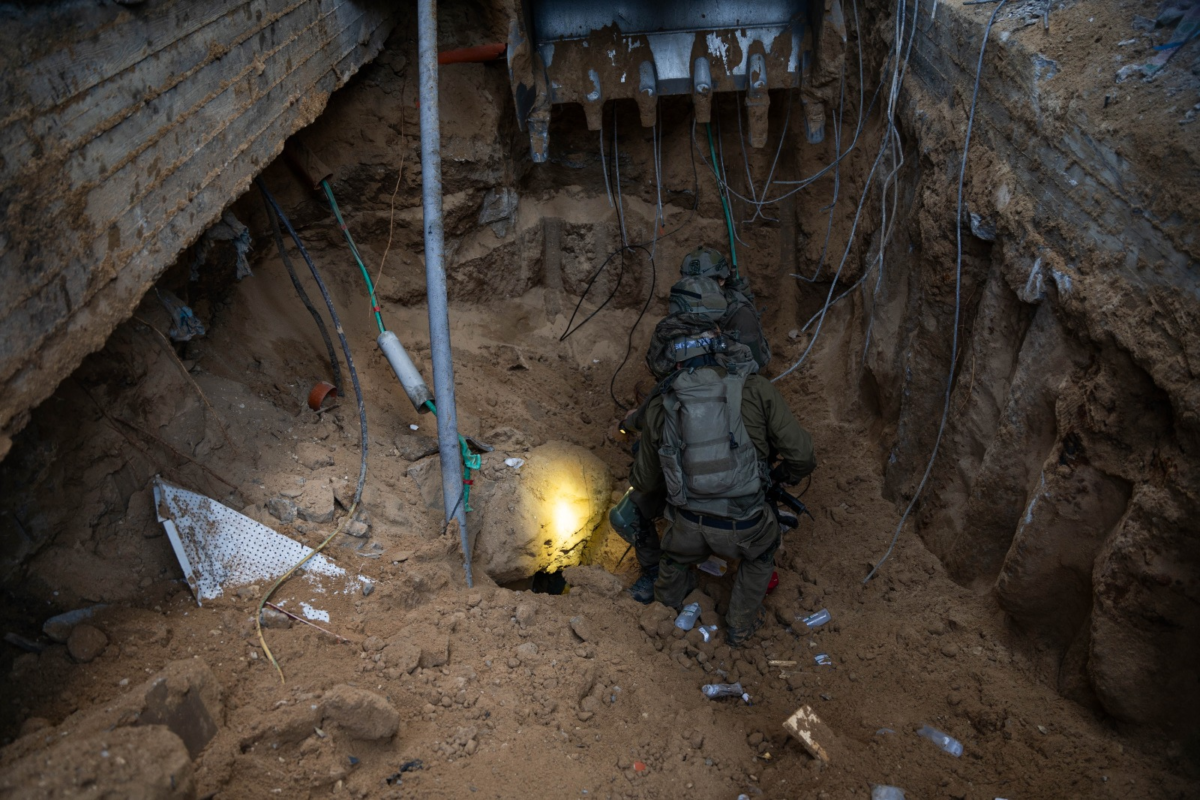In a significant revelation, the Israeli Defense force (IDF) has officially confirmed employing an innovative strategy of pumping “large volumes of water” into suspected Hamas tunnels in Gaza. After weeks of speculation, the IDF released a statement outlining the use of “new capabilities” aimed at neutralizing Hamas’ underground infrastructure. This tactic involves channeling substantial amounts of water into the tunnels, a strategy developed in cooperation with the Israel Ministry of Defense.
This groundbreaking revelation marks a strategic shift in the ongoing conflict, as the IDF addresses the intricate challenges posed by Hamas’ tunnel network. The acknowledgment of new capabilities and collaboration with the Ministry of Defense underlines the gravity and sophistication of the approach. As tensions persist, the world watches closely, seeking to understand the broader implications of this innovative tactic on the dynamics of the conflict and the future of warfare in complex, urban settings.
Unmasking the Strategy: A Tactical Overview
The IDF’s acknowledgment sheds light on a unique approach in the ongoing conflict. The military has implemented new capabilities with the specific goal of combating the threat posed by Hamas’ underground terrorist infrastructure. The statement emphasizes the selective use of this method, considering the soil and water systems in each specific case. Tools such as pumps and pipes are utilized in executing the water pumping strategy, underscoring the meticulous planning behind this unconventional tactic.

Strategic Considerations: Balancing Innovation and Caution
The IDF’s innovative approach raises questions about the safety of hostages believed to be held underground in Gaza. While discussions about flooding tunnels emerged in December, concerns have been expressed regarding potential risks, including the contamination of freshwater supplies and damage to surface-level infrastructure. The IDF, however, assures that the method is only employed in locations where it is suitable, indicating a cautious approach that takes into consideration the unique characteristics of each area.
Hamas’ Response: Downplaying the Impact and Asserting Resilience
Hamas, the Palestinian militant group controlling Gaza, has downplayed the potential success of Israel’s tactic. They assert that their tunnel network is designed to withstand such flooding, showcasing confidence in the resilience of their infrastructure. This assertion adds an intriguing layer to the ongoing conflict, as the IDF’s strategy introduces a dynamic element that challenges the assumptions about the effectiveness of Hamas’ tunnel network.

Humanitarian Concerns: Assessing Potential Risks and Impacts
The flooding operation introduces humanitarian considerations into the conflict dynamics. Concerns have been raised about potential risks, including damage to Gaza’s infrastructure and freshwater contamination. The selective use of water pumping in tunnels beneath populated areas adds complexity to the situation, highlighting the delicate balance between military tactics and potential humanitarian consequences.
Historical Context: Echoes of Past Flooding Tactics
The use of flooding as a countermeasure against tunnels is not entirely new. 6 years before, In 2018, the IDF had flooded tunnels constructed by Hezbollah on the Israel-Lebanon border with cement, causing spillage on the surface in southern Lebanon. Similarly, Egypt employed flooding in 2013 to block tunnels beneath its border with Gaza, utilizing seawater, sewage water, and cement. The historical context adds a layer of precedent to the IDF’s current strategy, demonstrating the evolving nature of counter-tunnel tactics.

The IDF’s strategic use of water in countering Hamas tunnels in Gaza signifies a dynamic shift in modern warfare. This approach demands thoughtful consideration of military strategy, potential humanitarian consequences, and the ever-changing nature of the conflict. The IDF’s innovative tactics reflect a commitment to staying ahead of evolving threats, highlighting the need for adaptability in neutralizing underground dangers. As the world watches, this intersection of military innovation and ethical considerations shapes the evolving narrative of contemporary warfare, emphasizing the importance of staying agile in the face of complex challenges.



